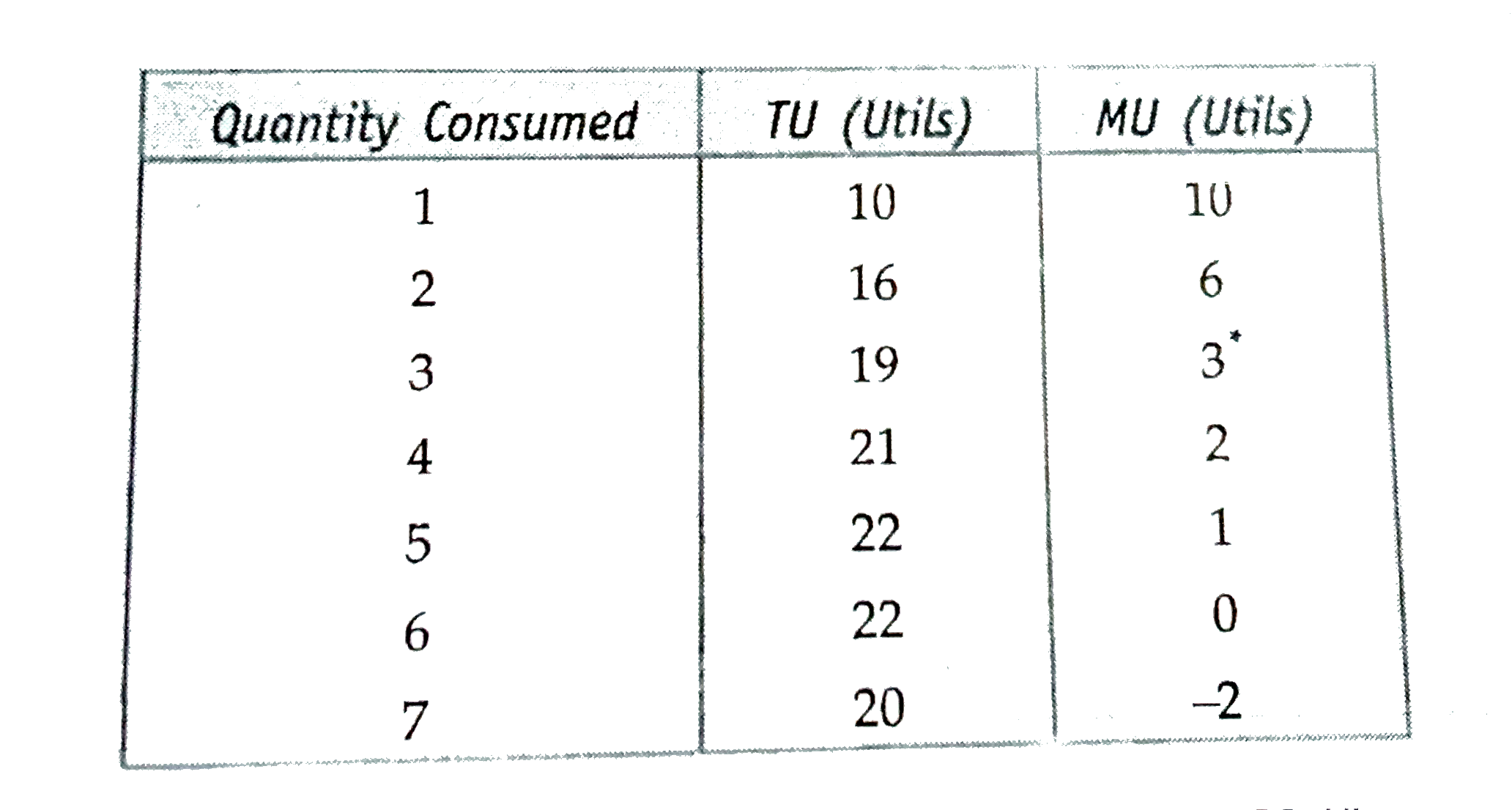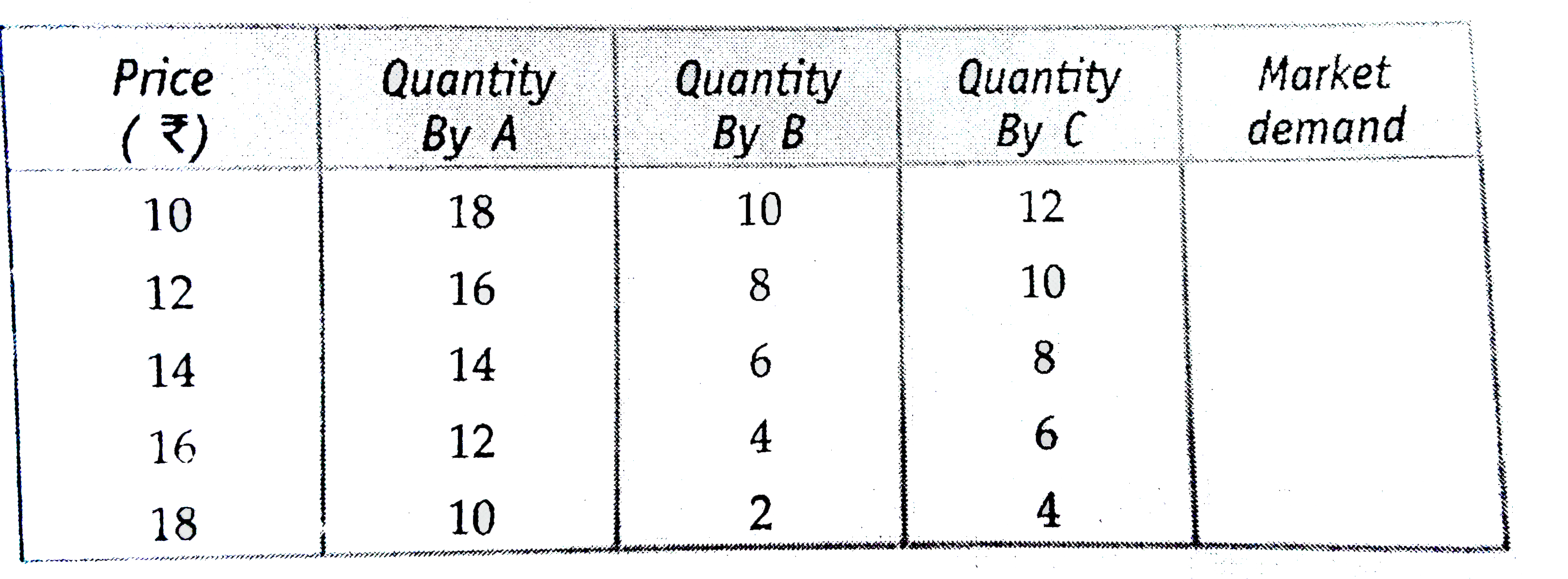Find MU from the following schedule :

The correct Answer is:N/a

MU=TUn−TUn−1
For example,
MU3=TU3−TU3−1
=19-16=3 and so on.
Topper's Solved these Questions
- CONSUMER'S EQUILIBRIUMBook:RADHA BHUGANAChapter:CONSUMER'S EQUILIBRIUMExercise:LET US RECAPITULATE
Explore 8 Videos
- CONSUMER'S EQUILIBRIUMBook:RADHA BHUGANAChapter:CONSUMER'S EQUILIBRIUMExercise:MCQ
Explore 14 Videos
- CONSUMER'S EQUILIBRIUMBook:RADHA BHUGANAChapter:CONSUMER'S EQUILIBRIUMExercise:UNSOLVED NUMERICALS
Explore 8 Videos
- CONCEPTS OF REVENUEBook:RADHA BHUGANAChapter:CONCEPTS OF REVENUEExercise:Unsolved numericals
Explore 4 Videos
- ELASTICITY OF DEMANDBook:RADHA BHUGANAChapter:ELASTICITY OF DEMANDExercise:Unsolved Numericals
Explore 24 Videos
Similar Questions
Calculate AP and MP from the following schedule :

View SolutionCalculate MPC and MPS from the following schedule:

View SolutionCalculate APC and APS from the following schedule :
Income(Y)100200300Consumption(C)80120180
View SolutionCalculate APC and APS from the following schedule :
Income(Y)100200300Consumption(C)80120180
View SolutionFind MU from the following data :

View SolutionCalculate APC and APS from the following schedule:

View SolutionCalculate APC and APS from the following schedule:

View SolutionCalculate the MP of variable factor and indicate the various phases of law of variable proportions from the following schedule :

View SolutionCalculate MPC from the following schedule:

View SolutionFind market demand from the following schedule and draw market demand curves:

View Solution